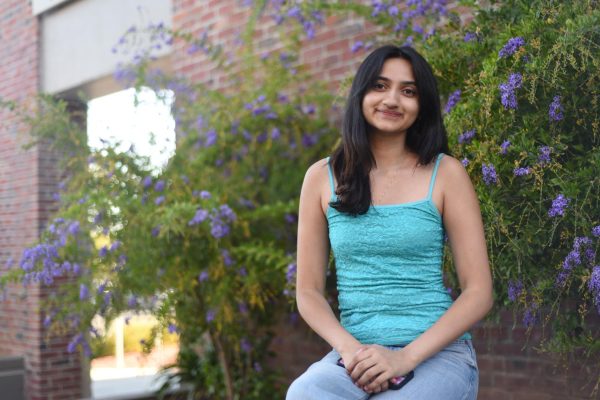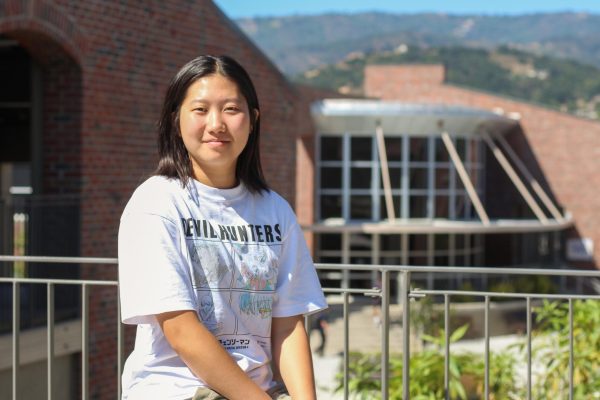Just three days after its grand opening, Schoolyard Bagels, a bagel store adjacent to New York’s Syracuse University, declared itself temporarily closed. Hearing this news prompted MVHS ‘20 alum and the Daily Orange’s editor-in-chief Anish Vasudevan to edit a news brief and upload an informative post on the paper’s Instagram.
“We post on Instagram probably four, five, sometimes even 10 times a day,” Vasudevan said. “People aren’t going straight to websites to check the news. They’re going on social media first, and then from there, they either read more on the website or you have to tell an entire story in the Instagram caption. We have an advantage because we’re also college students, and we understand what other students want to see on their social media.”
In the midst of this digital age, Vasudevan believes that journalism has had to evolve alongside the growing emergence of social media. Many large newspapers like the New York Times and the Washington Post have adapted to the use of social platforms, often promoting articles on Instagram and TikTok to drive traffic or to inform their viewers. However, while Vausedevan believes social media has driven journalistic evolution by increasing accessibility and engagement, he finds that it simultaneously diminishes journalistic value.
“We grew up on YouTube and TikTok, so we’re used to six-second videos, which you don’t need a long attention span for,” Vasudevan said. “So, newspapers have to tell as much as they can on social media in the post itself. In that way, it kind of diminishes a lot of the longer pieces and long-form journalism since our generation just doesn’t read. Even at the Daily Orange, our biggest audience is the local people and parents. Students only read the Instagram posts that relate to them.”
Along with this, Vasudevan notes that social media has also been a significant cause of online misinformation. Digital producer for the Boston Globe and MVHS ‘19 alum Roshan Fernandez agrees with Vasudevan, as he believes that the ability for anyone to post any information on social media challenges the validity of journalism.

Before working at the Boston Globe, a daily newspaper based in Boston, Fernandez interned at National Public Radio (NPR), where he managed the publication’s social media accounts. Early in 2023, NPR was falsely labeled as a “state-affiliated media” organization by social media platform X. Fernandez and other reporters wrote the official response to this allegation, stating that NPR would no longer be active on X.
“That government affiliated media label was very misleading for our readers because it sounded like the President was telling us what we had to write,” Fernandez said. “News outlets are doing what they can to address misinformation. However, with social media, you can try your best to distribute the facts as best you can to address the problem, but news organizations can only do so much when every single person can say pretty much anything on social media. ”
Sharing similar concerns as Fernandez and Vasudevan, Homestead High School literature teacher and advisor of the Epitaph, the school’s student-run publication, Natalie Owsley finds that the increase in misinformation has caused people to distrust the news on social media. To combat this issue, Owsley teaches the importance of media literacy to her students, specifically focusing on the importance of fact checking news sources on social media platforms.
“I think one of the roles we play as journalists is ensuring that all of the information we’re putting out there can be backed up by real time sources,” Owsley said. “There’s a lot of misinformation out there, so you can’t believe everything that you read. A lot of times you have to do additional research in order to fact check that what you’re reading is true, which can actually end up sucking up more time.”
Apart from the issue of misinformation, Fernandez believes the use of social media for journalism still has its benefits. He asserts that it keeps readers informed, despite the decrease in reader viewership.
“With big news events, you’ll see the Washington Post, the New York Times, the Wall Street Journal — all these big outlets have the who, what, where, when, why on their social media posts,” Fernandez said. “The entire idea of social media is that viewers have a quick ‘Here’s what you need to know about what happened.’ Readers can read the full story, but we understand that people aren’t doing that, so social media allows them to still consume news.”
Fernandez highlights that newsrooms are grappling with how to draw the attention of younger audiences. As people can access news on social media for free, he explains that they are less inclined to pay to read. According to Fernandez, newspapers are trying to find different ways to continue providing news to the public while trying to drive traffic back to their platforms, like websites and newsletters.

Vasudevan says some are scared that journalism may be endangered due to its seemingly decreasing value and people’s reliance on social media for news. However, seeing new students apply to be a part of the Daily Orange every year, Vasudevan is reassured there are still many people in the younger generation who enjoy media reporting. He believes that the next generation of students will keep traditional journalism alive, as those who are passionate about journalism will read it.
“Everyone’s kind of scared right now, but I think journalists have a very important role,” Vasudevan said. “And there is a generation that’s coming up that wants to be journalists. And that’s what’s really exciting. The people that actually care about journalism will go out of their way to read stories and read writers they like. The fact that kids are interested in writing means that there are some out there that are interested in reading what they’re writing. So I think everything’s going to be OK.”











